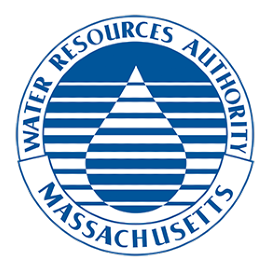The MWRA's Industrial, Commercial and Institutional (ICI) Water Management Program was developed to help businesses, industries and institutions improve their water efficiency, thereby reducing operational costs.
During the early 1990s, the ICI program completed almost a dozen surveys and water efficiency plans for both large and small restaurants. These are businesses providing meals in traditional restaurants as well as in hotels and commercial buildings that serve food in cafeterias.
Local restaurants ranging in size capacity from 85 seats to 1,500 seats and serving an average of 2,000 meals per week up to 40,000, were included in MWRA's water efficiency studies. Water consumption has ranged from under 1 million gallons to 13 million gallons per year with the amount of water used to produce a meal ranging from 6 gallons per meal to 29 gallons per meal.
This report has been developed based on lessons learned from previously conducted, sector-specific water use surveys. Listed below are some suggestions and examples of water efficiency measures for restaurants that have proven successful or have potential applications in businesses in the MWRA service area. Water and sewer rates, as well as cost/savings payback, are based on 1993 figures for all examples. For context, water costs in 2020 are approximately 5.7 times the 1993 rate.
Important Note: Before implementing any water efficiency measure, be sure to follow all rules and regulations regarding public health and safety requirements and the Massachusetts Plumbing Code. Be aware that 360 CMR 10.000 (PDF) (MWRA Sewer Use Regulations - PDF) prohibit the discharge of once-through cooling water to the MWRA sewer system.
Water Management Plan
Initiate a water management plan at your facility with the following steps:
- Management support
- Employee interest, input and ideas
- Customer participation
- Identify all water using systems and equipment
- Determine how much water your facility uses
- Look for ways to reduce overall water consumption
Kitchen Operations
Dishwashers
- Reduce pre wash spray fixtures to minimum necessary.
- Check with manufacturer to see if dishwasher spray heads can be replaced with more efficient heads, or if flow regulators can be installed.
- Operate dishwashers with full loads only and shut off when they are not in use. In conveyor type washer, ensure that water flow stops when there are no dishes in the washer. Install a sensing arm, or ware gate that will detect the presence of dishes and shut off water when there are no dishes on the conveyor.
- Evaluate reuse of rinse water for garbage disposer or scrapper trough.
Other Items
- Check flow of water to scrapper trough and reduce to minimum necessary. In larger establishments consider a conveyer-type scrapper system.
- Control the flow of water to the garbage disposer with a solenoid valve that shuts the water off when the unit is not operating or, if possible, consider eliminating the use of garbage disposers altogether.
- Turn off continuous flows or unnecessary flows in areas such as food prep and wash down.
- Minimize flow of running water for thawing foods following code for Massachusetts regulations.
Cooling
- Replace water-cooled ice machines with air-cooled units where possible, or retrofit with air-cooled condensers.
- Retrofit once-through water cooled refrigeration units, air conditioners, and ice machines by using temperature controls and a recirculating chilled water loop system.
Sanitary
- Install Massachusetts Plumbing Code conforming aerators or spring loaded valves on all faucets.
- Replace existing high flow toilets and urinals with plumbing code conforming low flow models using 1.6 gallons per flush (gpf) or less, and low flow urinals using 1.0 gpf or less.
- Retrofit flushometer toilets and urinals with low consumption valve replacement kits or replace existing flushometer toilets and urinals with low consumption models. Note: If replacing fixtures incrementally, priority should be given to those fixtures used most frequently.
- If remodeling bathrooms for ADA compliance, replace fixtures with low flow units.
Building Maintenance
- Read water meters weekly or monthly to monitor your water usage.
- Find and repair leaks.
